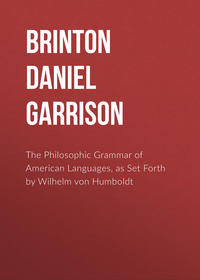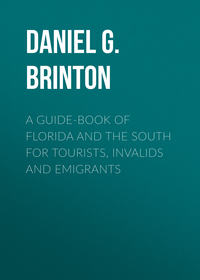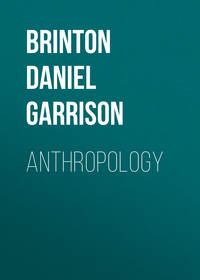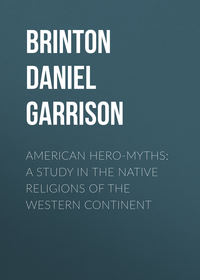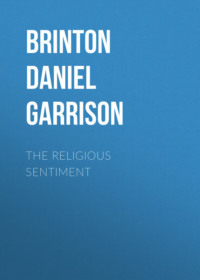 полная версия
полная версияNotes on the Floridian Peninsula; its Literary History, Indian Tribes and Antiquities
Some years afterwards Captain T. Nairns, an Englishman, accompanied a band of Yemassees on a slave hunting expedition to the peninsula. He kept a journal and took draughts on the road, both of which were in the possession of Herman Moll,65 but they were probably never published, nor does this distinguished geographer mention them in any of his writings on his favorite science.
Governor Oglethorpe renewed these hostile demonstrations with vigor. His policy, exciting as it did much odium from one party and some discussion in the mother country, gave occasion to the publication of several pamphlets. Those that more particularly refer to his expedition against the Spanish, are three in number,66 and, together with his own letters to his patrons, the Duke of Newcastle and Earl of Oxford,67 and those of Captain McIntosh, leader of the Highlanders, and for some time a captive in Spain, which are still preserved in manuscript in the Library of the Georgia Historical Society,68 furnish abundant information on the English side of the question; while the correspondence of Manuel de Montiano, Captain-General of Florida, extending over the years 1737-40, a part of which has been published by Captain Sprague69 and Mr. Fairbanks,70 but the greater portion still remaining inedited in the archives of St. Augustine, offers a full exposition of the views of their opponents.
A very important document bearing on the relations between the rival Spanish and English colonies, is the Report of the Committee appointed by the Commons House of Assembly of Carolina, to examine into the cause of the failure of Oglethorpe’s expedition. In the Introduction71 are given a minute description of the town, castle and military condition of St. Augustine, and a full exposition of the troubles between the two colonies, from the earliest settlement of the English upon the coast. Coming from the highest source, it deserves entire confidence.
Besides these original authorities, the biographies of Governor Oglethorpe, by W. B. O. Peabody, in Sparks’ American Biography, by Thomas Spalding, in the publications of the Georgia Historical Society, and especially that by the Rev. T. M. Harris, are well worthy of comparison in this connection.
In the catalogue of those who have done signal service to American history by the careful collation of facts and publication of rare or inedited works, must ever be enrolled among the foremost Andres Gonzales Barcia. His three volumes of Historiadores Primitivos de las Indias Occidentales, are well known to every one at all versed in the founts of American history. His earliest work of any note, published many years before this, is entitled A Chronological Essay on the History of Florida.72 He here signs himself, by an anagram on his real name, Don Gabriel de Cardenas z Cano, and is often referred to by this assumed title. In accordance with Spanish usage, under the term Florida, he embraced all that part of the continent north of Mexico, and consequently but a comparatively small portion is concerned with the history of the peninsula. What there is, however, renders it the most complete, and in many cases, the only source of information. The account of the French colonies is minute, but naturally quite one-sided. He is “in all points an apologist for his countrymen, and an implacable enemy to the Heretics, the unfortunate Huguenots, who hoped to find an asylum from persecution in the forests of the New World.”73 The Essay is arranged in the form of annals, divided into decades and years, (Decadas, Años,) and extends from 1512 to 1723, inclusive. Neither this nor any of his writings can boast of elegance of style. In some portions he is even obscure, and at best is not readable by any but the professed historian. Among writers in our own tongue, for indefatigability in inquiry, for assiduity in collecting facts and homeliness in presenting them, he may not inaptly be compared to John Strype, the persevering author of the Ecclesiastical Memorials.
His work was severely criticised at its appearance by Don Josef de Salazar, historiographer royal to Philip V, “a man of less depth of research and patient investigation than Barcia, but a more polished composer.” He was evidently actuated in part by a jealousy of his rival’s superior qualifications for his own post. The criticism repays perusal. None of Salazar’s works are of any standing, and like many another, he lives in history only by his abuse of a more capable man.
In the preface to his History of Florida, Mr. Williams informs us that he had in his possession “a rare and ancient manuscript in the Spanish language, in which the early history of Florida was condensed, with a regular succession of dates and events.” He adds, that the information here contained about the Catholic missions and the extent of the Spanish power had been “invaluable” to him. If this was an authentic manuscript, it probably dated from this period. Williams obtained it from Mr. Fria, an alderman of New York, and not understanding the language himself, had it translated. It is to be regretted that he has not imparted more of the “invaluable information” to his readers. The only passages which he quotes directly, induce me to believe that he was imposed upon by a forgery, or, if genuine, that the account was quite untrustworthy. Thus it spoke of a successful expedition for pearls to Lake Myaco, or Okee-chobee, which I need hardly say, is a body of fresh water, where the Mya margaratifera could not live. The extent of the Franciscan missions is grossly exaggerated, as I shall subsequently show. Rome at no time chartered a great religious province in Florida, whose principal house was at St. Augustine;74 nor does Mr. Williams’ work exhibit any notable influx of previously unknown facts about the native tribes, though he says on this point, his manuscript was especially copious. On the whole, we need not bewail the loss, or lament the non-publication of this record.
The latest account of the Spanish colony during this period, is that by Captain Robinson, who visited the country in 1754. It is only a short letter, and is found appended to Roberts’ History of Florida.
In the language of the early geographers, however, this name had a far more extensive signification, and many books bear it on their title pages which have nothing to do with the peninsula. Thus an interesting tract in Peter Force’s collection entitled “A Relation of a Discovery lately made on the Coast of Florida,” is taken up altogether with the shores of South Carolina. The superficial and trifling book of Daniel Coxe, insignificant in everything but its title, proposes to describe the Province “by the Spaniards called Florida,” whereas the region now bearing this name, was the only portion of the country east of the Mississippi and south of the St. Lawrence not included in the extensive claim the work was written to defend. In the same category is Catesby’s Natural History of Carolina, Florida, and the Bahama Islands. This distinguished naturalist during his second voyage to America, (1722) spent three years in Carolina, “and in the adjacent parts, which the Spaniards call Florida, particularly that province lately honored with the name of Georgia.” How much time he spent in the peninsula, or whether he was there at all, does not appear.
§ 4.—The English Supremacy. 1763-1780
No sooner had England obtained possession of her new colony than a lively curiosity was evinced respecting its capabilities and prospects. To satisfy this, William Roberts, a professional writer, and author of several other works, compiled a natural and civil history of the country, which was published the year of the cession, under the supervision of Thomas Jefferys, geographer royal.75 It ran through several editions, and though it has received much more praise than is its proper due, it certainly is a useful summary of the then extant knowledge of Florida, and contains some facts concerning the Indians not found in prior works. The natural history of the country is mentioned nowhere out of the title page; the only persons who paid any attention worth speaking of to this were the Bartrams, father and son. Their works come next under our notice.
John Bartram was born of a Quaker family in Chester county, Pennsylvania, in 1701. From his earliest youth he manifested that absorbing love for the natural sciences, especially botany, that in after years won for him from no less an authority than the immortal Linnæus, the praise of being “the greatest botanist in the New World.” He was also the first in point of time. Previously all investigations had been prosecuted by foreigners in a vague and local manner. Bartram went far deeper than this. On the pleasant banks of the Schuylkill, near Philadelphia, he constructed the first botanic garden that ever graced the soil of the New World; here to collect the native flora, he esteemed no journey too long or too dangerous. After the cession, he was appointed “Botanist to His Majesty for both the Floridas,” and though already numbering over three-score years, he hastened to visit that land whose name boded so well for his beloved science. Accompanied only by his equally enthusiastic son William, he ascended the St. Johns in an open boat as far as Lake George, daily noting down the curiosities of the vegetable kingdom, and most of the time keeping a thermometrical record. On his return, he sent his journal to his friends in England under whose supervision, though contrary to his own desire, it was published.76 It makes a thin quarto, divided into two parts paged separately. The first is a general description of the country, apparently a reprint of an essay by the editor, Dr. Stork, a botanist likewise, and member of the Royal Society, who had visited Florida. The second part is Bartram’s diary, enriched with elaborate botanical notes and an Introduction by the editor. It is merely the daily jottings of a traveller and could never have been revised; but the matter is valuable both to the naturalist and antiquary.
The younger Bartram could never efface from his memory the quiet beauty and boundless floral wealth of the far south. About ten years afterwards therefore, when Dr. Fothergill and other patrons had furnished him the means to prosecute botanical researches throughout the Southern States, he extended his journey to Florida. He made three trips in the peninsula, one up the St. Johns as far as Long Lake, a second from “the lower trading house,” where Palatka now stands, across the savannas of Alachua to the Suwannee, and another up the St. Johns, this time ascending no further than Lake George. The work he left is in many respects remarkable;77 “it is written” said Coleridge “in the spirit of the old travellers.” A genuine love of nature pervades it, a deep religious feeling breathes through it, and an artless and impassioned eloquence graces his descriptions of natural scenery, rendering them eminently vivid and happy. With all these beauties, he is often turgid and verbose, his transitions from the sublime to the common-place jar on a cultivated ear, and he is too apt to scorn anything less than a superlative. Hence his representations are exaggerated, and though they may hold true to him who sees unutterable beauties in the humblest flower, to the majority they seem the extravaganzas of fancy. He is generally reliable, however, in regard to single facts, and as he was a quick and keen observer of every remarkable object about him, his work takes a most important position among our authorities, and from the amount of information it conveys respecting the aborigines, is indispensable to the library of every Indianologist.
A very interesting natural history of the country is that written by Bernard Romans.78 This author, in his capacity of engineer in the British service, lived a number of years in the territory, traversing it in various directions, observing and noting with care both its natural features and the manners and customs of the native tribes. On the latter he is quite copious and is one of our standard authors. His style is discursive and original though occasionally bombastic, and many of his opinions are peculiar and bold. Extensive quotations from him are inserted by the American translator in the Appendix to Volney’s View of the United States. He wrote various other works, bearing principally on the war of independence. A point of interest to the bookworm in his History is that the personal pronoun I, is printed throughout as a small letter.
A work on a contested land title, privately printed in London for the parties interested about the middle of this period,79 might possess some little interest from the accompanying plan, but in other respects is probably valueless. There is a manuscript work by John Gerard Williams de Brahm, preserved in the library of Harvard College, which “contains some particulars of interest relative to Florida at the period of the English occupation.”80 Extracts from it are given by Mr. Fairbanks, descriptive of the condition of St. Augustine from 1763 to 1771, and of the English in the province. This De Brahm was a government surveyor, and spent a number of years on the eastern coasts of the United States while a British province.
Among the many schemes set in motion for peopling the colony, that of Lord Rolls who proposed to transport to the banks of the St. Johns the cypriennes and degraded femmes du pave of London,81 and that of Dr. Turnbull, are especially worthy of comment. The latter collected a colony from various parts of the Levant,—from Greece, from Southern Italy, and from the Minorcan Archipelago—and established his head quarters at New Smyrna. The heartless cruelty with which he treated these poor people, their birth-place and their fate, as well as the fact that from them most of the present inhabitants of St. Augustine receive their language, their character, and the general name of Minorcans, have from time to time attracted attention to their history. Besides notices in general works on Florida, Major Amos Stoddard in a work on Louisiana82 sketches the colony’s rise and progress, but he is an inaccurate historian and impeachable authority. It is the only portion of his chapter on the Floridas of any value. In 1827, an article upon them was published in France by Mr. Mease,83 which I have not consulted, and a specimen of their dialect, the Mahonese, as it existed in 1843, in the Fromajardis or Easter Song, has been preserved by Bryant, and is a curious relic.84
§ 5.—The Second Spanish Supremacy. 1780-1821
During this period few books were published on Florida and none whatever in the land of the regainers of the territory. The first traveller who has left an account of his visit thither is Johann David Schöpf,85 a German physician who had come to America in 1777, attached to one of the Hessian regiments in the British service. At the close of the war he spent two years (1783-4) in travelling over the United States previous to returning home, a few weeks of which, in March, 1784, he passed in St. Augustine. He did not penetrate inland, and his observations are confined to a description of the town, its harbor and inhabitants, and some notices of the botany of the vicinity—for it was to natural history and especially medical botany that Schöpf devoted most of his attention during his travels. The difficulties of Spain with the United States in regard to boundaries gave occasion for some publications in the latter country. As early as 1797, the President addressed a message to Congress “relative to the proceedings of the Commissioner for running the Boundary Line between the United States and East and West Florida,” which contains a resumé of what had been done up to that date.
Andrew Ellicott, Commissioner in behalf of the United States, was employed five years in determining these and other boundaries between the possessions of our government and those of His Catholic Majesty. He published the results partially in the Transactions of the American Philosophical Society, and more fully several years afterwards in a separate volume.86 They are merely the hasty notes of a surveyor, thrown together in the form of a diary, without attempt at digestion or connection; but he was an acute and careful observer, and his renseignements on the topography of East Florida are well worth consulting. Among the notable passages is a vivid description of the remarkable meteoric shower of November 12, 1799, which he encountered off the south-western coast of Florida, and from which, conjoined with the observations of Humboldt at Cumana, and others, the periodicity of this phænomenon was determined by Palmer, of New Haven.
A geographical account of Florida is said to have appeared at Philadelphia about this time, from the pen of John Mellish,87 but unless it forms merely a part of the general geography of that author, I have been able to find nothing of the kind in the libraries of that city.
The article on Florida in the important work on America of Antonio de Alcedo,88 derives some importance from the list of Spanish governors it contains, which, however, is not very perfect; but otherwise is of little service.
Serious difficulties between the Seminole Indians89 and the whites of Georgia, occurred at an early date in this period arising from attempts of the latter to recapture fugitive slaves. These finally resulted in the first Seminole war, and attracted the attention of the general government. The action taken in respect to it may be found in the Ex. Doc. No. 119, 2d Session, XVth Congress, which contains “the official correspondence between the War Department and General Jackson; also that between General Jackson and General Gaines, together with the orders of each, as well as the correspondence between the Secretary of the Navy and Commodore Patterson, and the orders of the latter officer to Sailing-Master Loomis, and the final report of Sailing-Master Loomis and General Clinch;”90 also in two messages of the President during 1818, on the Seminole war, one of which contains the documents relative to Arbuthnot and Ambruster, the Cherokees, Chocktaws, &c., and in the speeches of the Hon. Robert Poindexter, and others. Dr. Monette and Mr. Giddings, in their historical works, have also examined this subject at some length.
Two accounts of the fillibustering expeditions that resulted in the forcible possession of Amelia Island by Captain MacGregor, have been preserved; one, “the better of the two,” by an anonymous writer.91 They are both rare, and neither have come under my inspection.
An important addition to our knowledge of East Florida during this period, is contained in the entertaining Letters of Dr. William Baldwin.92 This gentleman, a surgeon in the United States Navy, and a devoted lover of botany, compelled to seek safety from a pulmonary complaint by taking refuge in a warm climate during the winter months, passed portions of several years, commencing with 1811, in East Florida and on the confines of Georgia, occupying himself in studying the floral wealth of those regions. He recorded his observations in a series of letters to Dr. Muhlenberg of Lancaster, and to the subsequent editor of his Remains, Dr. William Darlington, of West Chester, Pa., well known from his works on the local and historical botany of our country, and whom I have already had occasion to advert to as the editor of the elder Bartram’s Correspondence. While those to the former have no interest but to the professed botanist, his letters to the latter are not less rich in information regarding the condition of the country and its inhabitants, than they are entertaining from the agreeable epistolary style in which they are composed, and the thanks of the historian as well as the naturalist are due to their editor for rescuing them from oblivion. It was the expectation of Dr. Baldwin to give these observations a connected form and publish them under the subjoined title,93 but the duties of his position and his untimely death prevented him from accomplishing this design. As far as completed, comprising eight letters, twenty pages in all, this work is appended to the Reliquiæ.
The cession of Florida to the United States, naturally excited considerable attention, both in England and our own country, manifested by the appearance of several pamphlets, the titles of two of the most noteworthy of which are given below.94
Numerous manuscripts pertaining to the history of the colony are said to have been carried away by the Catholic clergy at the time of the cession, many of which were deposited in the convents of Havana, and probably might still be recovered.
§ 6.—The Supremacy of the United States. 1821-1858
No sooner had the United States obtained possession of this important addition to her territory, than emigrants, both from the old countries and from the more northern States, prepared to flock thither to test its yet untried capabilities. Information concerning it was eagerly demanded and readily supplied. In the very year of the cession appeared two volumes, each having for its object the elucidation of its geography and topography, its history, natural and civil.
One of these we owe to William Darby,95 an engineer of Maryland, not unknown in our literary annals as a general geographer. It is but a compilation, hastily constructed from a mass of previously known facts, to satisfy the ephemeral curiosity of a hungry public. As far as is known of his life, the author never so much as set foot in the country whose natural history he proposes to give, and he will err widely who hopes to find in it that which the pretentious title-page bids him expect.
A much superior work is that of James Grant Forbes.96 This gentleman was a resident of the territory, and had ample opportunities for acquiring a pretty thorough knowledge of its later history, both from personal experience and from unpublished documents. He is consequently good authority for facts occurring during the British and later Spanish administrations. Though at the time of publication the subject of considerable praise, his work has since been denounced, though with great injustice, as “a wretched compilation from old works.”97
The next year a little book appeared anonymously at Charleston.98 The writer, apparently a physician, had travelled through Alachua county, and ascended the St. Johns as far as Volusia. It consists of a general description of the country, a diary of the journey through Alachua, and an account of the Seminole Indians with a vocabulary of their language. Some of his observations are not without value.
The next work in chronological order was written by Charles Vignoles, a “civil and topographical engineer,” and subsequently public translator at St. Augustine. In the Introduction he remarks, “The following observations on the Floridas have been collected during a residence in the country; in which period several extensive journeys were made with a view of obtaining materials for the construction of a new map, and for the purpose now brought forward.” He notices the history, topography, and agriculture, the climate and soil of the territory, gives a sketch of the Keys, some account of the Indians, and is quite full on Land Titles, then a very important topic, and adds to the whole a useful Appendix of Documents relative to the Cession.99 Vignoles is a dry and uninteresting composer, with no skill in writing, and his observations were rather intended as a commentary on his map than as an independent work.
Energetic attempts were shortly made to induce immigration. Hopes were entertained that a colony of industrious Swiss might be persuaded to settle near Tallahassie, where it was supposed silk culture and vine growing could be successfully prosecuted. When General Lafayette visited this country he brought with him a series of inquiries, propounded by an intelligent citizen of Berne, relative to the capabilities and prospects of the land. They were handed over to Mr. McComb of that vicinity. His answers100 are tinged by a warm fancy, and would lead us to believe that in middle Florida had at last been found the veritable Arcadia. Though for their purpose well suited enough, for positive statistics it would be preferable to seek in other quarters.
In 1826, there was an Institute of Agriculture, Antiquities, and Science organized at Tallahassie. At the first (and, as far as I am aware, also the last) public meeting of this comprehensive society, Colonel Gadsden was appointed to deliver the opening address.101 This was afterwards printed and favorably noticed by some of the leading journals. Apparently, however, it contained little at all interesting either to the antiquarian or scientific man, but was principally taken up with showing the prospect of a rapid agricultural developement throughout the country.



